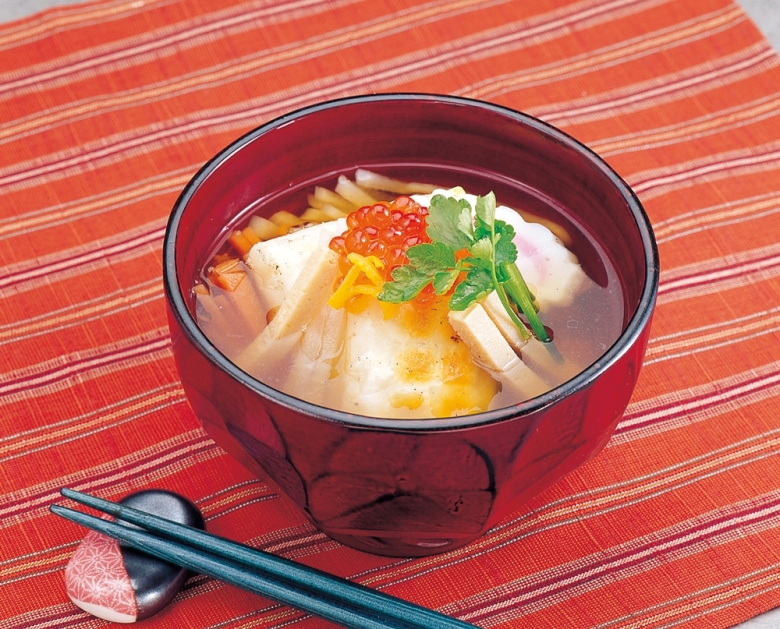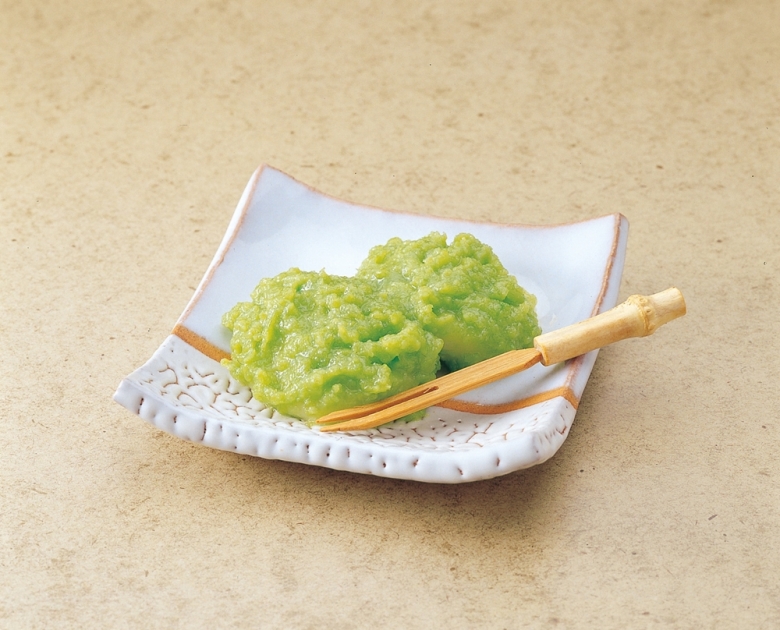Osechi: Japan's New Year Feast and Rice Cake
Our Healthy Food of Asia webzine previews healthy and unique dishes from around the world and features the history and culture behind the dishes that different countries have to offer. This month, Asia Society Korea collaborated with the Japanese Embassy to introduce Osechi (お節), traditional Japanese New Year dishes.
Mr. Kazuo Chujo, Director of Public Information and Cultural Center at the Japanese Embassy in Seoul and Mr. Taku Tsuji, Director of Miyagi Prefecture Seoul Office, took their time to introduce the Japanese New Year feast and rice cakes.

(Photo Credit: Embassy of Japan)
Chujo: I wish you all a Happy New Year! In Japan, we celebrate the arrival of New Year with Osechi or a New Year’s feast. Some dozen dishes that evoke prosperity for the coming year are elaborately arranged in lacquered boxes.
Tsuji: This is an Osechi prepared by a colleague of mine from Miyagi Prefecture. Two or three boxes are common nowadays but traditionally people have used four to five boxes to prepare these meals.

(Photo Credit: Embassy of Japan)
What kind of dishes go into making osechi? Are there any rules?
Chujo: Each dish has a good meaning, not to mention that it tastes good as well. For example, eggs and fish roe signify fecundity and prosperity. Shrimps are often used in Osechi to wish for a long life just like their long beards and bended backs. The Japanese word for beans can also be used to describe someone who is studious or diligent.
Tsujii: With their red-and-white color combination, picked carrots and radishes or Japanese kamabozo fish cakes may signify celebration. The optics matter just as much as the taste of an Osechi dish.
Chujo: Japanese cuisine was reportedly registered as a UNESCO intangible cultural heritage in 2013 but it was actually registered as “Washoku, the traditional dietary cultures of the Japanese people, notably for the celebration of a New Year.” Osechi is a typical example of Japanese traditional dietary culture.
It must be tough work to prepare all these dishes to celebrate the New Year.
Tsujii: Osechi usually has enough portions to last a few days of festivities. Traditionally, housewives have prepared the Osechi dishes by New Year’s Eve and took free time with their family on New Year’s Day without cooking. Recently, purchasing Osechi dishes at department stores or traditional Japanese restaurants is gaining in popularity.
Chujo: This year many people could not return to their hometowns due to the COVID-19 situation and Osechi takeout was in vogue. Since my family is in Tokyo while I live here in Seoul alone, I received packs of Osechi dishes from Japan and enjoyed them with my family over a video call.
Korea and Japan share the customs of eating rice cake soup when celebrating the New Year. Did you have rice cake soup along with Osechi?
Chujo: Yes, of course. The difference is that Japanese rice cakes are made from sticky glutinous rice while Korean rice cakes are made from regular non-glutinous rice. Since there are no real rules for making rice cakes, every region in Japan has its own traditional recipe. How about your hometown, Mr. Tsujii?
Tsujii: The recipe for Sendai zoni or rice cake soup from the Sendai region in Miyagi Prefecture is characterized by using goby fish broth and salmon roe topping, as well as dried tofu and vegetables. Access to fresh seafood and proximity to the mountains led to the creation of this recipe. We often use whole dried goby fish as topping, but this photo just highlights the rice cakes.

(Photo Credit: Embassy of Japan)
How do you enjoy rice cakes other than in soup?
Chujo: There is a variety of rice cake dishes all throughout Japan. Some people make them sweet by using red bean paste or a mixture of soybean powder and sugar. Others enjoy them with grated radish or natto. How about in Miyagi prefecture, Mr. Tsujii?
Tsujii: Zunda mochi or rice cakes topped with zunda paste made from edamame or young green soybean is famous.

(Photo Credit: Embassy of Japan)
Its fine green color treats the eyes, and the natural aroma of the bean arouses happy feelings of nostalgia. It is a specialty food of northeastern Japan, especially the Sendai region. Recently zunda paste is also being used for dishes such as zunda ice cream, zunda shakes, zunda soda, and many other sweets and snacks. Zunda mochi and other food with zunda are now must-try dishes for all tourists and visitors to Sendai.
Chujo: Young green soybeans are harvested in the summer but nowadays we can purchase frozen edamame throughout the year. I found them at a supermarket in Seoul.
Tsujii: It’s not easy to make Osechi or Sendai zoni abroad but zunda paste is easy to make if young green soybeans are available. Please give it a try!
RECIPE: Zunda mochi (rice cakes with young green soybean paste)
4 servings
Prep time: 30 min from pods, 15 min from beans
Main Ingredients
- Edamame (young green soybeans): 300g (out of pods)
- Sugar: 100g
- Salt: 1 teaspoon or 6g
- Soy sauce: 2 teaspoons or 10ml
- Water: 1 cup or 200ml
- Rice Cake: 8 pieces (but you may also use bread or crackers instead)
Method:
- If you have edamame pods, wash them and boil in water for 15 min, and then remove the pods and thin skin from the beans.
- Mince and mash the beans.
- Add and mix the other ingredients, except water.
- Mix it with water for its desired softness.
- Spread over the cooked rice or any of its substances.
* Original recipe from Gotsuosan by Miyagi Food Culture Interhiting Association
You can read the Korean version here.
